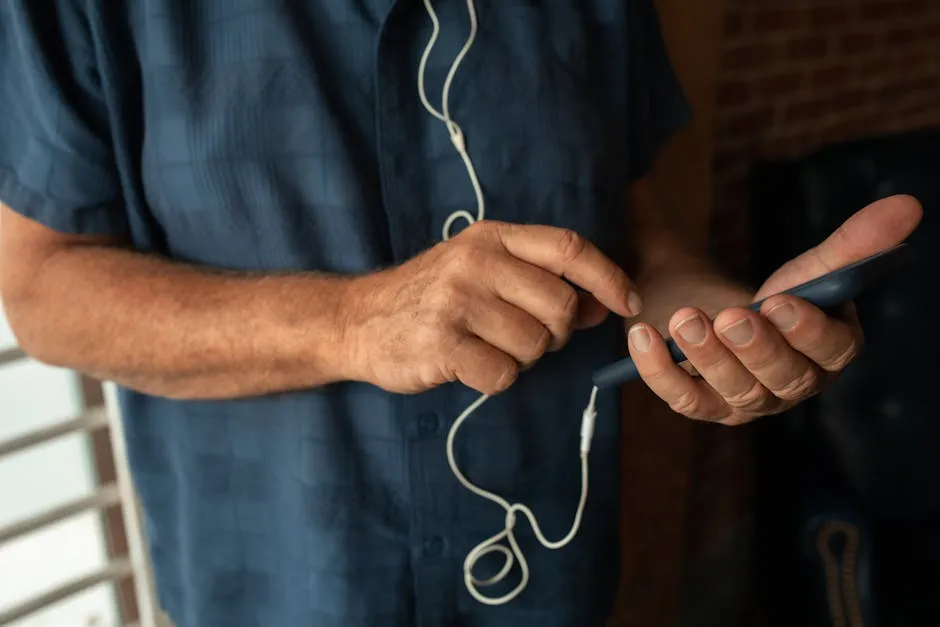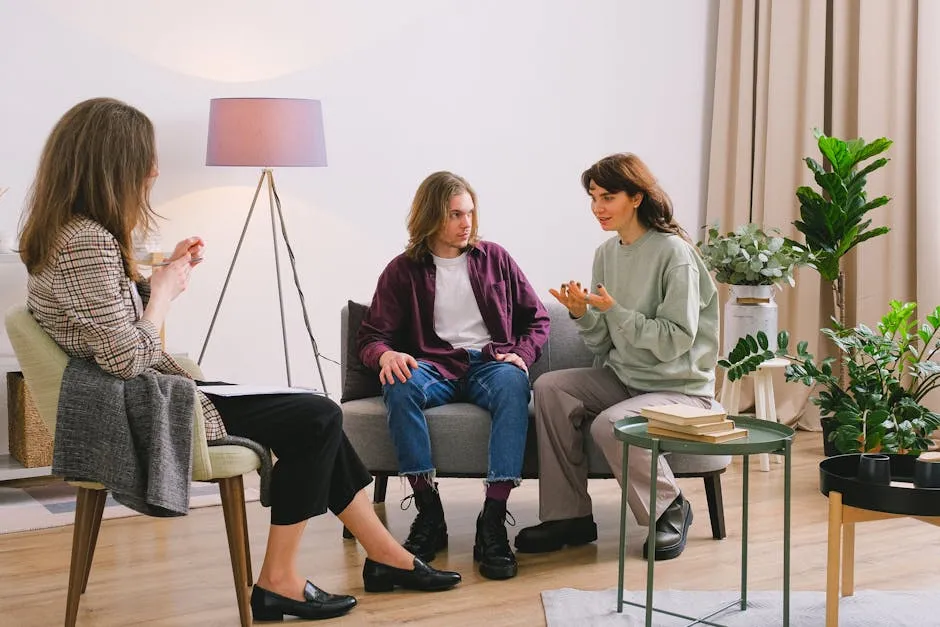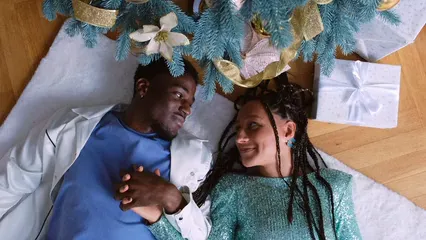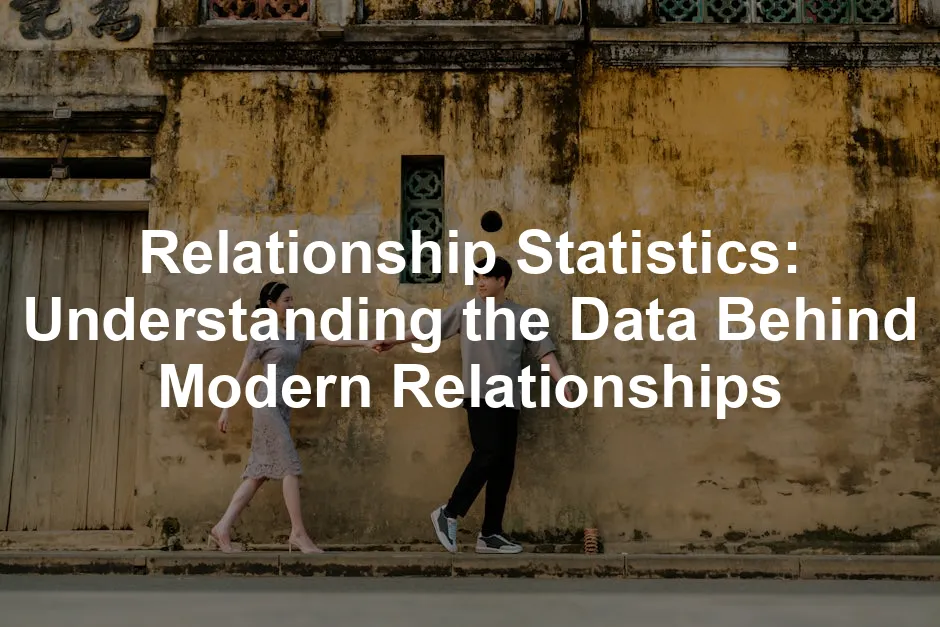Introduction
Dating isn’t what it used to be. Relationship statistics are here to help us make sense of the ever-evolving landscape of love and romance. These numbers tell us about trends, preferences, and behaviors in our romantic lives. They can turn the perplexing world of dating into something a bit more predictable.
Why are these statistics important? Knowing how many people are swiping right or left can provide insight into what to expect when entering the dating scene. It can help you make informed choices about your romantic endeavors. Whether you’re single, dating, or in a long-term relationship, understanding these stats can be a game changer.
Data from credible sources like Pew Research and various surveys provide valuable insights. They reveal tangible patterns in relationships, highlighting what works and what doesn’t in the modern dating world. So, buckle up as we explore how these statistics shape our understanding of love.

The Importance of Relationship Statistics
Understanding Relationship Dynamics
Relationship statistics offer a glimpse into the behaviors and preferences of modern daters. For instance, did you know that nearly 70% of individuals who met through dating apps ended up in exclusive relationships? That’s a promising number! Such insights help individuals understand the potential outcomes of their dating choices.
Statistics also spotlight how different demographics approach relationships. Younger generations are more open to diverse relationship structures, while older adults may lean towards traditional commitments. This knowledge helps individuals navigate their romantic lives with more confidence.
If you want to deepen your understanding of how to make relationships thrive, consider reading The 5 Love Languages: The Secret to Love That Lasts by Gary Chapman. This book can be a game changer in understanding how to express and receive love in relationships.

The Impact of Technology on Relationships
Technology has dramatically altered the dating landscape. Online dating apps and social media have become the go-to methods for meeting potential partners. In fact, Pew Research indicates that 30% of U.S. adults have used a dating app at some point. This isn’t just a passing trend; it’s a fundamental shift in how we connect.
With the rise of online dating, individuals can filter potential matches based on preferences that align with their values. For example, statistics reveal that emotional maturity is prioritized over physical appearance by 63% of respondents. This means that people are looking for deeper connections, rather than just swiping on a pretty face.
Furthermore, dating apps have changed the effectiveness of forging connections. Surveys show that 42% of online dating users aim for marriage. However, only 13% actually get engaged or married through these platforms. This disparity highlights the ongoing challenge of finding lasting love in a digital world. Understanding these dynamics is crucial for anyone navigating modern relationships.
To better grasp these dynamics, you might find it helpful to explore The Relationship Cure: A 5 Step Guide to Strengthening Your Marriage, Family, and Friendships by John Gottman. This book is packed with practical advice to navigate the complexities of relationships.

Key Relationship Statistics to Know
Dating App and Online Relationship Statistics
Usage and Popularity
The world of online dating is bustling! As of 2023, approximately 381 million users worldwide are registered on various dating platforms. That’s a significant jump from previous years. In the U.S., around 30% of adults have dabbled in online dating. Not surprisingly, younger adults are the most active. About 53% of those under 30 have tried their luck on dating apps.
Interestingly, the demographics vary. For instance, LGBTQ+ individuals are twice as likely to use dating apps compared to their straight counterparts. Men (34%) outpace women (27%) in utilizing these platforms. It seems that when it comes to swiping, guys have the upper hand!
As for preferences, emotional maturity is the number one trait sought after by users, with 63% prioritizing it over physical appearance. This trend showcases a shift towards deeper connections in the digital age. It’s not just about looks anymore; it’s about finding someone who can handle life’s rollercoaster with grace.
If you’re looking for insights into attachment styles and how they impact relationships, check out Attached: The New Science of Adult Attachment and How It Can Help You Find – and Keep – Love by Amir Levine. This book delves into how attachment styles affect our romantic relationships.

Success Rates
Now, let’s talk success rates. A survey conducted in 2023 revealed that nearly 70% of individuals who met via dating apps ended up in exclusive relationships. That’s pretty impressive! But it gets even better. For users aged 43 to 58, this success rate jumps to 72%. Who knew that love could bloom later in life?
On the flip side, not everyone is looking for a lifelong partner. Approximately 26% of online daters aren’t seeking commitment. Conversely, 42% are actively searching for marriage. The numbers suggest that while many pursue serious connections, a good chunk still enjoys a more casual approach. It’s like a buffet—you can choose what suits your taste!

Age and Relationship Statistics
Trends Across Generations
When it comes to relationships, age plays a significant role. Statistics highlight that marriage rates have been on a steady decline among younger generations. Millennials and Gen Z are delaying marriage, with many opting to focus on personal growth first. In fact, the average age for first marriages has increased, now sitting at around 30 for women and 32 for men.
Divorce rates also tell a story. Approximately 50% of marriages in the U.S. end in divorce, but this figure varies significantly by age and education level. Interestingly, individuals who marry later tend to experience lower divorce rates. It appears that waiting might just be the secret sauce for lasting love.
Moreover, the average age at which people get married has risen over the years. In the 1970s, it was common for women to marry in their early 20s. Fast forward to today, and the trend has shifted to women marrying in their late 20s or early 30s. This change reflects a broader societal acceptance of diverse life paths.
For those interested in understanding emotional connections better, Hold Me Tight: Seven Conversations for a Lifetime of Love by Dr. Sue Johnson offers valuable insights into nurturing lasting bonds.

Age Gaps in Relationships
Age gaps in relationships can be fascinating! A striking statistic reveals that around 8% of married heterosexual couples have an age difference of ten years or more. Interestingly, this figure climbs to about 25% for male-male unions. These dynamics can add layers of complexity but also contribute to richer experiences.
However, age gaps come with their own set of challenges. Research indicates that couples with a five-year age gap are 18% more likely to divorce. But for those with a 20-year age gap? The risk soars to a staggering 95%. It seems that while love might conquer all, a significant age difference might put it to the test.
In conclusion, understanding these key relationship statistics offers valuable insights into the evolving nature of love in our society. From the rise of online dating to the changing dynamics across age groups, these numbers are not just figures—they’re reflections of our shared human experience. So, whether you’re swiping right or contemplating a long-term commitment, these statistics can help guide your journey through the intricate world of relationships.

Mental Health and Relationships
Correlation Between Relationship Quality and Mental Health
The connection between relationship quality and mental health is crystal clear. Research shows that 90% of individuals believe a healthy partnership is crucial for their mental well-being. When relationships flourish, so do mental health outcomes. Couples who experience high relationship satisfaction report lower stress and depression levels. Conversely, relationship conflicts can trigger anxiety and exacerbate existing mental health issues.
A study from 2022 indicated that nearly half of Americans feel stressed about their love lives. This stress is especially pronounced among younger generations, with a staggering 70% of Gen Z reporting high anxiety levels related to dating. It’s no secret that navigating modern romance can be overwhelming!
If you’re looking for strategies to enhance your emotional intelligence, consider reading Emotional Intelligence: Why It Can Matter More Than IQ by Daniel Goleman. This book can help you navigate emotional complexities in relationships.

The Role of Counseling
Couples counseling can work wonders for relationship health. Statistics reveal that 89% of individuals see value in seeking professional help for their partnerships. However, barriers remain. Cost is the leading obstacle, with 55% of respondents citing it as a primary concern. Alongside cost, finding a suitable therapist and convincing a partner to attend also pose significant challenges.
Interestingly, 70% of people express personal interest in couples therapy, but only 35% have actually attended sessions. This gap suggests a disconnect between recognizing the benefits and taking action. Counseling can provide invaluable tools to manage conflicts and improve communication, making it a worthy investment for many couples.
For a practical guide, check out Couple’s Therapy Workbook: A Guide to Improving Relationships and Communication by A. J. L. DeAngelis. This workbook offers practical exercises to enhance your relationship dynamics.

Long-Distance Relationships
Long-distance relationships (LDRs) are more common than you might think. A whopping 14 million Americans are currently navigating the challenges of love across miles. Surprisingly, about 60% of these couples manage to make it work! But don’t let those numbers fool you; maintaining a long-distance romance isn’t all roses and chocolates.
The biggest hurdle? Physical intimacy. In fact, 66% of college students in long-distance relationships cite this as their main struggle. Yet, many couples find creative ways to nurture their bond. Texting is a lifeline, with couples sending an average of 343 messages weekly. Video calls also play a crucial role in bridging the gap, allowing partners to share moments and feelings in real-time.
Absence can create longing, and about 81% of couples report heightened intimacy upon reuniting. It’s like a Netflix series where every episode builds anticipation for the next big reveal! However, many LDRs falter due to a lack of future plans. It’s crucial for couples to establish a timeline for eventually closing the distance, ensuring both partners are on the same page.
For those navigating LDRs, the book The Long-Distance Relationship Survival Guide by Chris Bell and Kate Brauer-Bell is a must-read. It provides strategies to overcome the unique challenges of long-distance love.

Interracial and Same-Sex Relationships
Interracial relationships are becoming increasingly common. In the U.S., approximately 11 million Americans are married to someone of a different race or ethnicity. This statistic reflects a growing acceptance of diversity in romantic partnerships. For instance, 46% of Asian newlyweds and 39% of Hispanic newlyweds are in interracial unions.
Societal perceptions have shifted dramatically over the years. A recent survey revealed that 39% of Americans support interracial marriages, marking a 15% increase over seven years. This change indicates a more inclusive view of love that transcends racial boundaries.
Similarly, acceptance of same-sex relationships is on the rise. Nearly half of millennials and Gen Zers believe that same-sex marriage is beneficial for society. This shift in mindset is not just a trend; it represents a significant cultural evolution that embraces love in all its forms. The fight for equality has fostered an environment where love knows no gender.
If you’re interested in exploring the emotional intricacies of relationships, consider reading The Science of Happily Ever After: What Really Matters in the Quest for Enduring Love by Ty Tashiro. This book provides insights into what makes relationships thrive.

Non-Traditional Relationship Structures
The rise of non-traditional relationship structures, such as open relationships and polyamory, is reshaping the dating landscape. Statistics show that about 34% of adults are open to relationships that are not strictly monogamous. This shift highlights a growing acceptance of diverse ways of loving and connecting.
Public perception of these relationship types is evolving, albeit slowly. Many still hold traditional views, but younger generations are more willing to explore alternatives. Approximately 51% of respondents believe that non-monogamous relationships can be just as fulfilling as traditional ones.
As awareness spreads, discussions around boundaries, consent, and communication in these arrangements become paramount. The dialogue continues to grow, and as society becomes more inclusive, the acceptance of various relationship structures will only increase. Embracing love in its many forms enriches our collective experience and broadens our understanding of what it means to connect with others.
If you’re curious about the dynamics of emotional intelligence in relationships, The Power of Vulnerability: Teachings of Authenticity, Connection, and Courage by Brené Brown is a fantastic resource to deepen your understanding of emotional depth in relationships.

In summary, exploring the statistics related to long-distance, interracial, same-sex, and non-traditional relationships reveals the evolving nature of love. The challenges and triumphs faced by couples in these categories provide valuable insights into the complex world of modern relationships. By understanding these dynamics, we can foster greater empathy and appreciation for diverse experiences in love.

Relationship Conflicts and Breakdowns
Relationships can sometimes resemble a game of Jenga—one wrong move, and everything comes crashing down. A significant 20% of men and 13% of women admit to cheating in their relationships. Infidelity is a common culprit behind many relationship breakdowns. The emotional fallout can be devastating, leading to trust issues and resentment.
Financial stress is another sneaky villain in the relationship saga. A staggering 29% of millennials feel unprepared for marriage due to financial concerns. Money matters can create tension, causing couples to argue more frequently about budgeting, spending, and financial goals. Nearly half of Americans report feeling stressed about their love lives, with finances often at the heart of these anxieties.
Additionally, communication breakdowns are a key reason couples split. A study found that 68% of couples struggle to have difficult conversations about significant issues. When partners can’t discuss their feelings or needs, misunderstandings fester, leading to resentment.
To tackle these challenges head-on, consider reading The Relationship Fix: Dr. Jenn’s 6-Step Guide to Strengthening Your Love Life by Dr. Jenn Mann. This guide provides practical tips to improve communication and resolve conflicts.

The Impact of Societal Changes
Societal shifts can have a profound effect on relationship dynamics. The COVID-19 pandemic, for instance, transformed how couples interact. A survey during the pandemic revealed that 38% of individuals felt their relationships grew stronger. However, 11% reported increased distance due to lockdown pressures and lifestyle changes.
The rise of remote work also shifted priorities. With more people working from home, couples had to navigate new boundaries in shared spaces. This change led to a staggering 47% of Americans believing dating has become more challenging in the past decade, as finding quality time together became an elusive goal.
Moreover, the pandemic prompted a reevaluation of relationship goals. A significant number of people now prioritize emotional intimacy and communication over traditional markers of commitment. The shift in perspective highlights the evolving nature of relationships in response to external pressures.
For those interested in understanding the emotional aspects of relationships, The Art of Loving by Erich Fromm provides timeless insights into the nature of love and relationships.

Conclusion
In summary, relationship statistics reveal crucial insights into the complexities of modern love. From understanding common conflicts to recognizing societal influences, these numbers provide a framework for personal growth. By grasping the reasons behind relationship breakdowns, individuals can cultivate healthier connections.
Reflecting on one’s relationship statistics can be enlightening. Are you communicating effectively? Are financial discussions productive? Evaluating these aspects can foster deeper understanding and improved relationship health. So, take a moment to consider your own relationship dynamics and how these insights can lead to positive changes in your love life.
FAQs
What percentage of relationships formed online end in marriage?
Approximately 14% of online daters marry someone they met on a dating app. This statistic highlights the potential for lasting connections in the digital age, making it clear that online platforms can lead to meaningful relationships.
How do relationship statistics vary by age group?
Relationship statistics show significant differences across age demographics. Younger adults, particularly those under 30, are more likely to explore diverse relationship structures, while older generations tend to prefer traditional commitments.
What are some common reasons for relationship failure?
Key reasons for relationship failure include infidelity (20% of men, 13% of women), financial stress (29% of millennials feeling unprepared for marriage), and communication breakdowns (68% struggling to address difficult topics).
How has the pandemic affected relationships?
During the COVID-19 pandemic, 38% of individuals reported their relationships strengthened, while 11% felt increased distance. The shift highlighted the importance of emotional intimacy and communication in navigating shared challenges.
Are long-distance relationships successful?
Surprisingly, about 60% of long-distance couples manage to make their relationships work. However, many struggle with physical intimacy, and a lack of future planning can lead to challenges in sustaining the connection.
For those interested in understanding the relationship between statistical learning and its applications, you can check out this insightful piece on an introduction to statistical learning with python book length.
Please let us know what you think about our content by leaving a comment down below!
Thank you for reading till here 🙂
All images from Pexels




